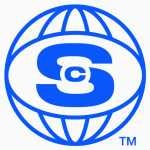Once again, we're happy to offer up a look at the overall footwear sales landscape for the Q2 2010 season. With the help of SportsONESource Analyst Matt Powell, we have a detailed breakdown of the latest industry statistics, as well as the latest trends in footwear sales and market share position. Some key highlights include continued struggles for Nike's Women's division due to their refusal, perhaps stubbornly costing them millions, to enter the Toning category. Jordan Brand also suffered a fourth straight month of declining sales. Dive in and read along! Below, enjoy the following insights from Matt Powell himself, with key notes in bold, as he takes a look at overall footwear sales to end June 2010:
***
Sales for July slowed from the 10 percent gains we saw in May and June, but was positive nonetheless, improving in the mid singles in dollars and low singles in units, driving a low single digit increase in average selling price. July is typically one of the smallest months in volume. The smallest week of the year occurred during July. The last week of July is the unofficial kickoff to back-to-school. Sales for the last week only grew in the low singles. I've been following the back-to-school business for 35 years, and it always seems to start off slowly. What matters in back-to-school is how it finishes, not how it starts.
Virtually all the growth in July came from Toning. Toning was 5.3 percent of sales for July, in line with its contribution year to date. While sales of Toning slowed from earlier dollar values, so did the sales of all athletic shoes.
Toning remains on track to exceed $1 billion and will likely hit $1.5 billion for the year. The Skechers planned promotion appeared to be successful, as it doubled the units sold and liquidated older styles.
The other big headline for July was the Jordan business, which declined for the fourth straight month, down in the high singles. The styles offered this year simply could not offset the ones from last year. Anecdotally, we are hearing the styles for Q3 should be much more successful. Overall, the sales for Q2 remained on track, growing in the high single digits in dollars and the low singles in units, yield a mid single digit increase in average selling price.
By Channel, Family footwear again led the charge with sales improving in the mid teens. Mall and Full Line both grew in the mid singles.
Top sellers for the quarter were: Air Force 1 (2 styles) Skechers Shape-ups (4 styles) Easy Tones (2 styles) a Nike Free running style and a Retro Jordan 6.
Men's sales improved in the mid singles. Women's sales grew in the high teens. Nike Women's sales again declined in the high singles and Nike lost 700 basis points in women's market share. Kid's sales declined in the low singles. Kids is suffering from the lack of toning and from having little lightweight running. If we look at the adult business without the positive effect of toning and lightweight running, the trends there are similar to the trend in kids. Three quarters of the growth in Q2 came from Toning and the balance came from Lightweight Running.
For the quarter, Skechers had 60 percent share of Toning and Reebok 34 percent. Avia had 3 percent. Running remains a very important story, lead by Lightweight which grew more than three times. Overall running improved in the mid teens. All the major brands except Adidas (down high teens) and Under Armour (down low teens) had nice increases. Puma running grew by half on the fashion styles. The smaller brands (Saucony, Brooks and Mizuno) all had strong increases. Performance running 45 percent of sales grew about 25 percent, while fashion running only grew in the mid singles.
Basketball declined in the low singles as Jordan sales were off in the high singles. Brand Nike basketball grew in the high teens, while Adidas declined in the low teens. And 1 improved by two thirds.
Lifestyle fashion athletic again declined in the high teens. Every major brand had significant declines.
Classics dropped about -10 percent. Only New Balance showed improvement. All others declined.
Training improved in the high singles. Both Nike and New Balance had strong growth in basic white footcovering. Under Armour Training declined about a third.
Cleated improved in the mid singles. Nike and Under Armour grew in the low singes, while Adidas posted a mid teens gain, as the World Cup sparked some interest in soccer for them.
The struggles in Skate continued with sales down more than -20 percent. This hit the family channel particularly hard, as they do the bulk of the Skate business. Of the major brands, only Vans had an increase in Skate. Sandals grew in the low teens. Adidas and Jordan both had declines. Crocs were up 20 percent.
Top Five Overall Market Share:
* Brand Nike -- 33.4 percent
* Jordan -- 8.3 percent
* Skechers -- 6.8 percent
* Adidas -- 5.4 percent
* Reebok -- 4.3 percent
Brand Nike (33.4 percent share) lost 170 basis points in share, and sales only improved in the low singles, well off the industry trend. Good results in basketball and running barely offset the lack of a toning strategy and weak Skate and Lifestyle.
Jordan (8.3 percent) lost 160 basis points in share as sales declined in the high singles. Converse declined in the low teens as Chuck Taylor has crested. Skechers (6.8 percent) held #3 share, as sales nearly doubled. Reebok (4.3 percent) sales did double and share leapt 200 basis points. Adidas (5.4 percent) sales declined in the mid singles, as improved classics helped offset other declines. Asics (4.0 percent) sales improved in the mid singles. Saucony, Brooks and Mizuno were all up sharply. Crocs sales grew 29 percent while Under Armour declined about -25 percent.

